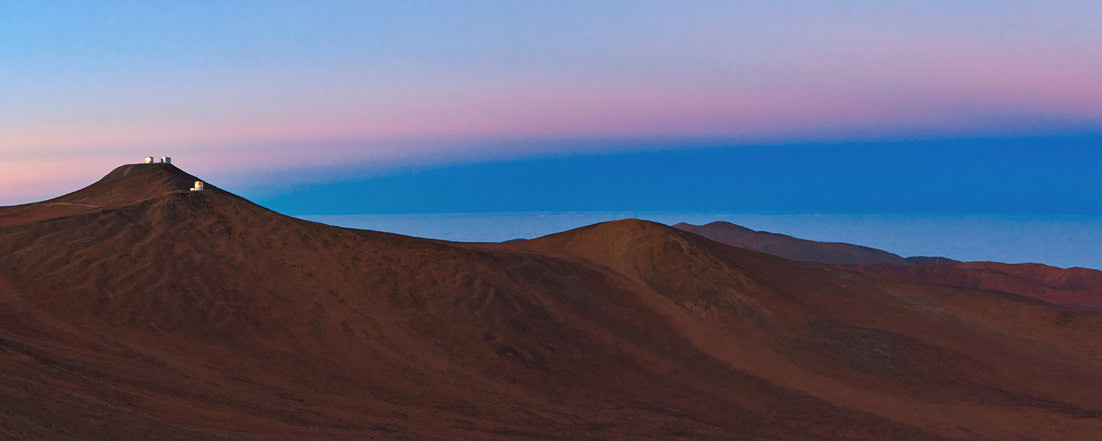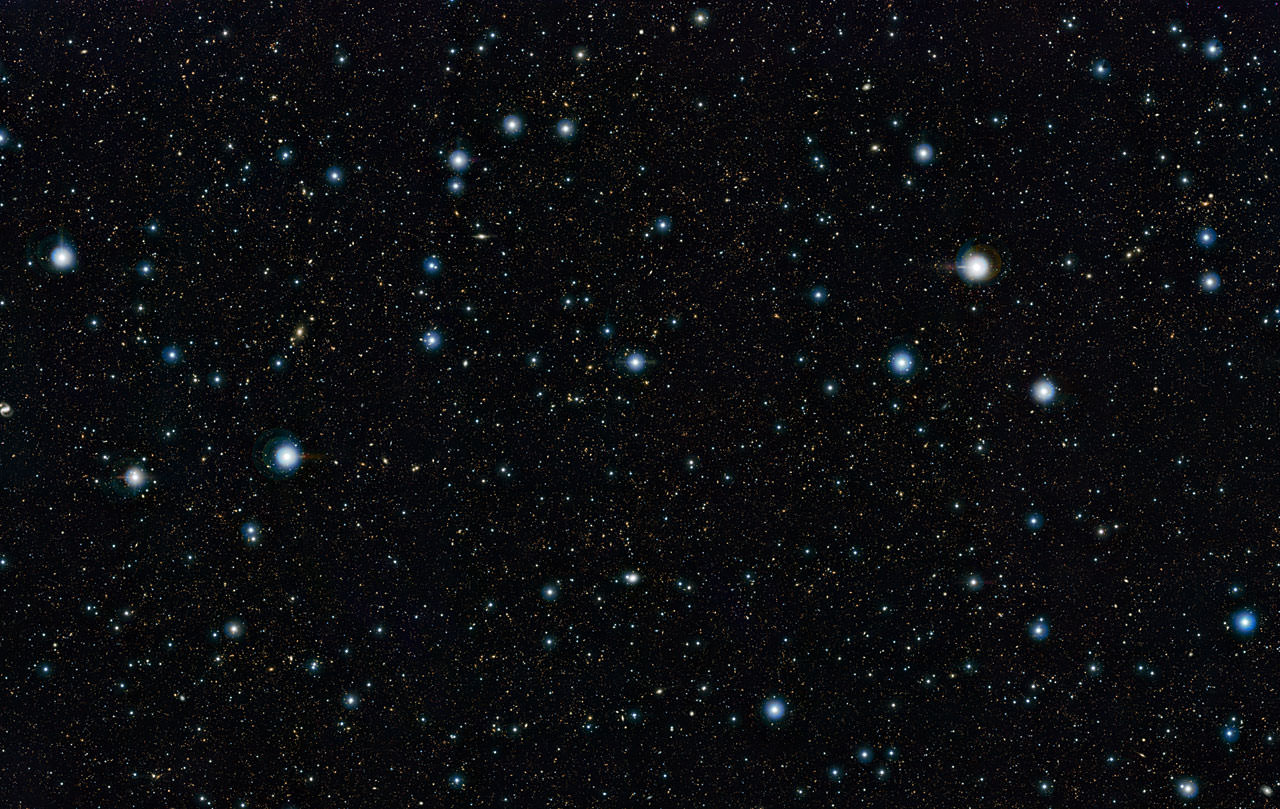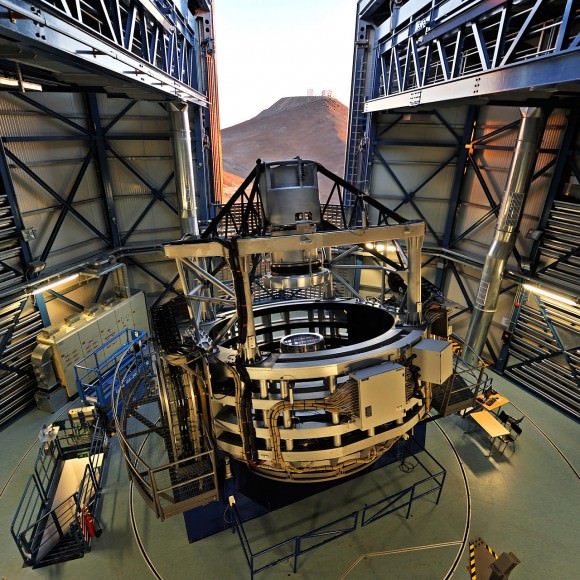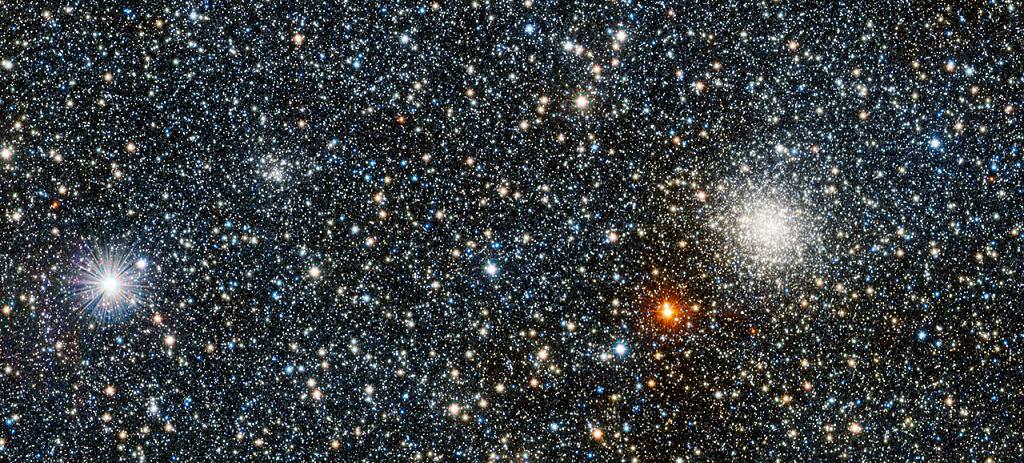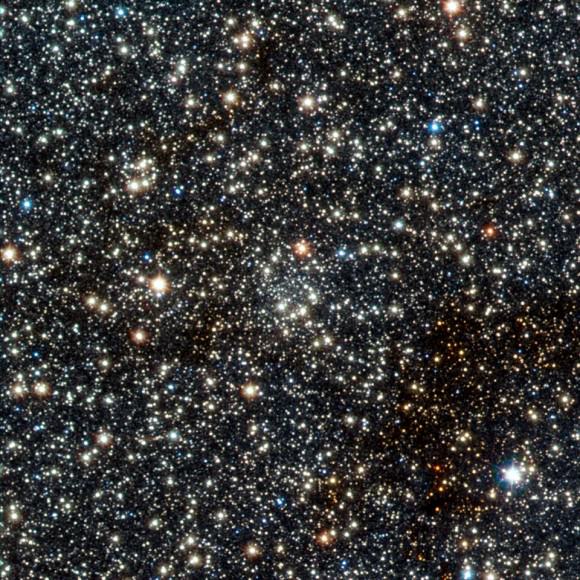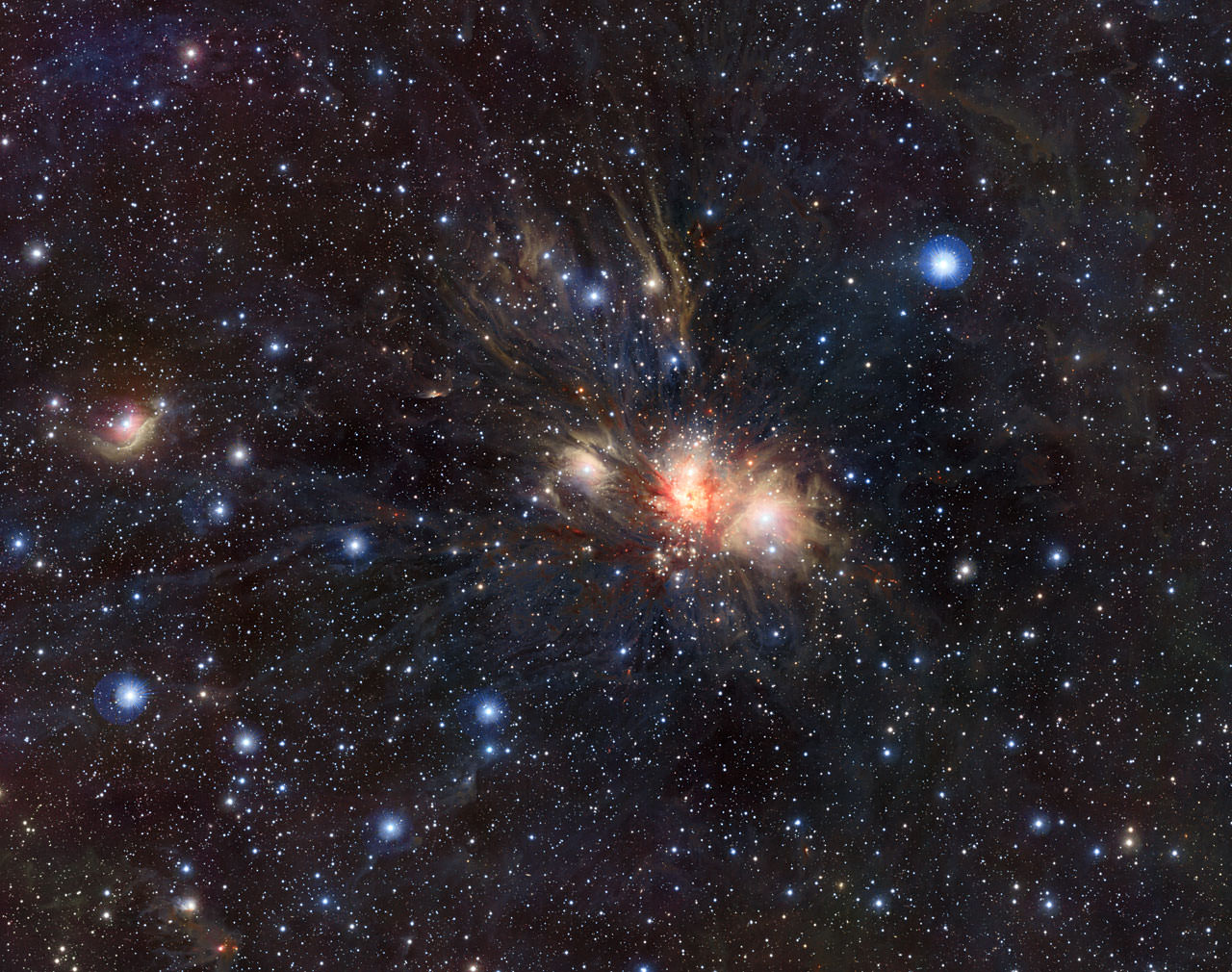Infrared image of globular cluster 47 Tucanae (NGC 104) captured by ESO’s VISTA telescope.
“My god, it’s full of stars!” said Dave Bowman in the movie 2010 as he entered the monolith, and one could imagine that the breathtaking view before him looked something like this.
Except this isn’t science fiction, it’s reality — this is an image of globular cluster 47 Tucanae taken by the European Southern Observatory’s VISTA telescope at the Paranal Observatory in Chile. It reveals in stunning detail a brilliant collection of literally millions of stars, orbiting our Milky Way galaxy at a distance of 15,000 light-years.
The full image can be seen below.
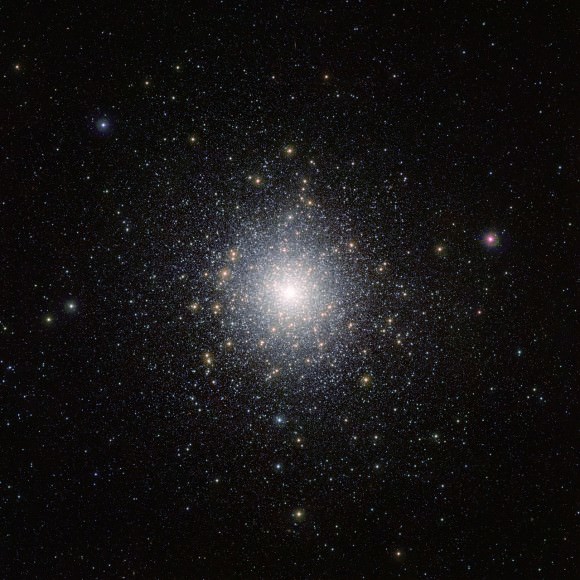
47 Tucanae (also known as NGC 104) is located in the southern constellation Tucana. It’s bright enough to be seen without a telescope and, even though it’s very far away for a naked-eye object, covers an area about the size of the full Moon.
In reality the cluster is 124 light-years across.
Although globular clusters like 47 Tucanae are chock-full of stars — many of them very old, even as stars go — they are noticeably lacking in clouds of gas and dust. It’s thought that all the gaseous material has long since condensed to form stars, or else has been blown away by radiation and outbursts from the cluster’s exotic inhabitants.
At the heart of 47 Tucanae lie many curious objects like powerful x-ray sources, rapidly-spinning pulsars, “vampire” stars that feed on their neighbors, and strange blue stragglers — old stars that somehow manage to stay looking young. (You could say that a globular cluster is the cosmic version of a trashy reality show set in Beverly Hills.)
Red giants can be seen surrounding the central part of the cluster, old bloated stars that are running out of fuel, their outer layers expanding.
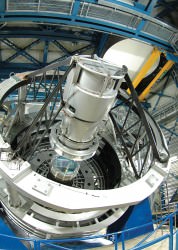 The background stars in the image are part of the Small Magellanic Cloud, which was in the distance behind 47 Tucanae when this image was taken.
The background stars in the image are part of the Small Magellanic Cloud, which was in the distance behind 47 Tucanae when this image was taken.
VISTA is the world’s largest telescope dedicated to mapping the sky in near-infrared wavelengths. Located at ESO’s Paranal Observatory in Chile, VISTA is revealing new views of the southern sky. Read more about the VISTA survey here.
Image credit: ESO/M.-R. Cioni/VISTA Magellanic Cloud survey. Acknowledgment: Cambridge Astronomical Survey Unit
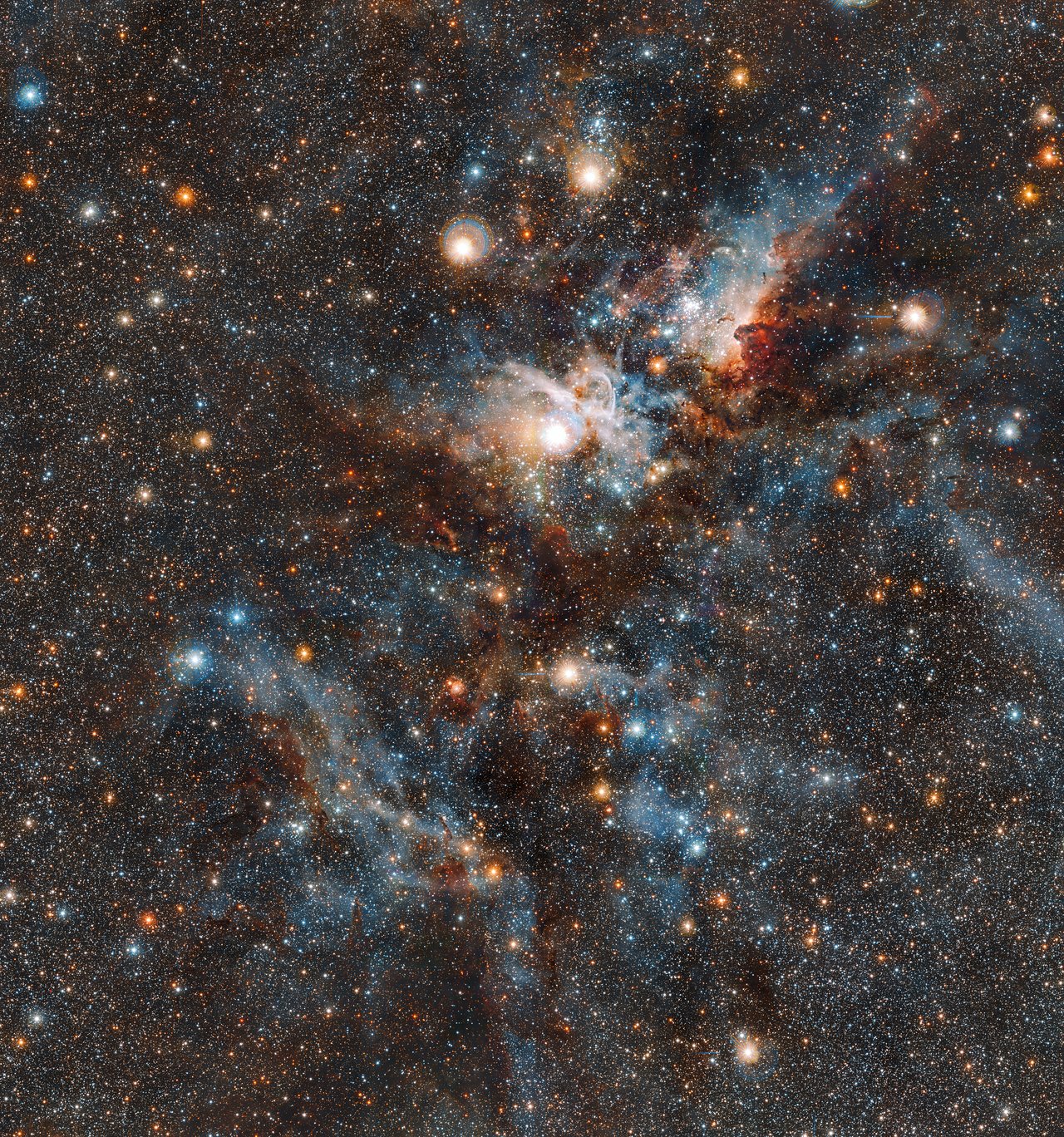

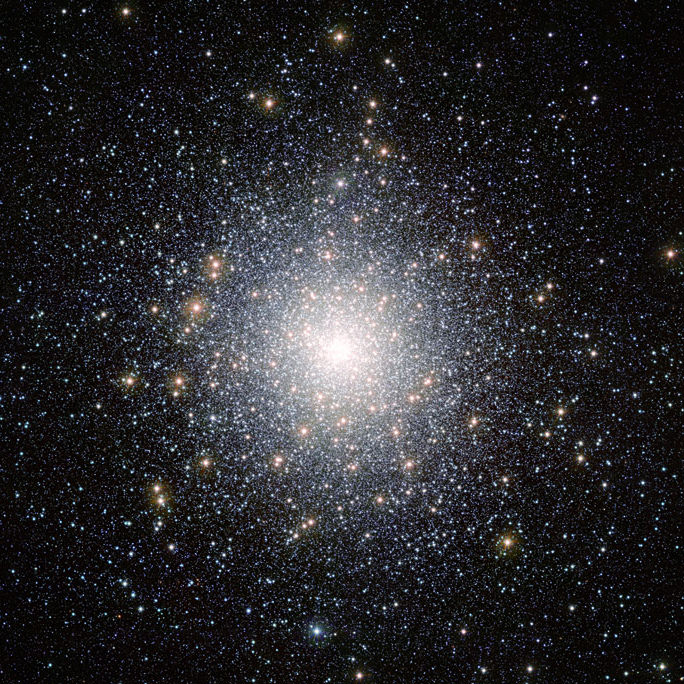

 The background stars in the image are part of the Small Magellanic Cloud, which was in the distance behind 47 Tucanae when this image was taken.
The background stars in the image are part of the Small Magellanic Cloud, which was in the distance behind 47 Tucanae when this image was taken.